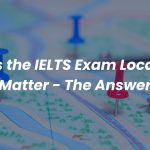Knowing the IELTS Writing Task 2 Format and Structure can help you score Band 7 in the exam, especially if you are taking the IELTS General Traning exam, where most students remain stuck at a 6.5 band score, even after multiple attempts.
Many don’t know the IELTS Writing Task 2 Format and structure and repeat the exam with the same mistakes. Many Students believe that the examiner will show some mercy to them and will mark the 7 bands in the writing module. It doesn’t work like this. I remember a very famous quote on such thoughts.
Insanity is doing the same thing over and over again and expecting different results.
It fits into the society and for the people from all walks of life. The same applies to people trying to get tourist visas in Canada, the USA, the UK, Schengen, etc. Their agents tell them to keep applying, and someday, they will definitely get the visa grant. Sometimes, they get visas not because of luck but because their documents are well-prepared.
Most students are unaware of the common IELTS Essay topics. They keep doing essays from the internet that aren’t on the IELTS level and hardly make sense. Below is the list of essay types that every IELTS test taker must know who is taking the exam, especially the students of General Training.
IELTS TASK 2 IMPORTANT TIPS TO GET 8.0+: COMMON IELTS ESSAY TOPICS
- Social media
- Education
- Employment
- Travel
- Government/ government spending
- Public transport
- Justice/ crime/ youth crime
- Language/ culture
- Environment
- Technology
- Health
- Society
- Globalization
- International Aid
If you pick up any IELTS Writing Task 2 essay from trusted sources such as Cambridge or British Council Books, you will find them from one of the types above.
Now, let’s move on to the different IELTS types you need to practice.
| IELTS Writing Task 2 Types | Details |
|---|---|
| Agree/Disagree | – Agree/Disagree – To what extent do you agree/disagree – Positive/Negative Development – What is your opinion – Is it good or bad (They all are the same) |
| Advantages and Disadvantages | – Advantages and disadvantages – The advantages outweigh the disadvantages – More advantages or more disadvantages – Advantages outnumber disadvantages |
| Both Views and Give Your Opinion | – Present both views and give your opinion. |
| Problems and Solutions | – Problems and solutions – Causes and solutions – Causes and effects |
| Two-Part Question | – Also known as a double question. |
Now, let’s move on to a structure that will help you get Band 7 as easily as possible.
First, examine the IELTS Writing Task 2 requirement: “Write at least 250 words.” Many students are unaware that examiners count each word. If your word count is lower than 250, you get penalized in the Task Response.
It’s better to have 4 paragraphs in any given type of essay.
- Introduction – (50-60 words)
- Body Paragraph 1 – (100-120 words)
- Body Paragraph 2 – (100-120 words)
- Conclusion – (30-50 words)
Structure for Agree/Disagree type essays –
Use the four-paragraph structure given below:
- Introduction –
- a) Paraphrase Question Statement (Usually 1 sentence long)
- b) Opinion Sentence (1 sentence long)
- Main Body Paragraph 1 –
- a) Write topic sentence which will set paragraph’s theme (1 sentence long)
- b) Explanation of topic sentence (Usually 2 to 3 sentences long)
- c) Result (Usually 1 sentence long)
- d) Example (Usually 1 sentence long)
- Main Body Paragraph 2 –
- a) Write topic sentence which will set paragraph’s theme (1 sentence long)
- b) Explanation of topic sentence (Usually 2 to 3 sentences long)
- c) Result (Usually 1 sentence long)
- d) Example (Usually 1 sentence long)
- Conclusion –Opinion + Summary of main ideas (Usually 1 sentence long)
Structure for Both views type essays–
Use the four-paragraph structure given below:
- Introduction –
- a) Paraphrase Question Statement (Usually 1 sentence long)
- b) Opinion Sentence (1 sentence long)
- Main Body Paragraph 1 – First View
- a) Write topic sentence containing one view which will set paragraph’s theme (1 sentence long)
- b) Explanation of topic sentence (Usually 2 to 3 sentences long)
- c) Result (Usually 1 sentence long)
- d) Example (Usually 1 sentence long)
- e) State why you agree or disagree with this viewpoint (Usually 1 sentence long)
- Main Body Paragraph 2 – Second View
- a) Write topic sentence containing the other view which will set paragraph’s theme (1 sentence long)
- b) Explanation of topic sentence (Usually 2 to 3 sentences long)
- c) Result (Usually 1 sentence long)
- d) Example (Usually 1 sentence long)
- e) State why you agree or disagree with this viewpoint(Usually 1 sentence long)
- Conclusion – Opinion + Summary of main ideas (Usually 1 sentence long)
Structure for Advantages and Disadvantages type essays –
Use the four-paragraph structure given below:
- Introduction –
- a) Paraphrase Question Statement (Usually 1 sentence long)
- b) Outline Sentence containing 2 advantages and 2 disadvantages (1 sentence long)
- Main Body Paragraph 1 – Advantages
- a) Write topic sentence of advantages side (1 sentence long)
- b) Explanation offirst advantage (Usually 2 sentences long)
- c) Explanation of second advantage (Usually 2 sentences long)
- d) Example (Usually 1 sentence long)
- Main Body Paragraph 2 – Disadvantages
- a) Write topic sentence of disadvantages side (1 sentence long)
- b) Explanation of first disadvantage (Usually 2 sentences long)
- c) Explanation of second disadvantage (Usually 2 sentences long)
- d) Example (Usually 1 sentence long)
- Conclusion – Summary of main ideas (Usually 1 sentence long)
Structure for Advantages outweigh Disadvantages type essays –
Use the four-paragraph structure given below:
- Introduction –
- a) Paraphrase Question Statement (Usually 1 sentence long)
- b) Opinion Sentence (1 sentence long)
- Main Body Paragraph 1 –
- a) Write topic sentence containing either advantage or disadvantage (1 sentence long)
- b) Explanation of topic sentence (Usually 2 to 3 sentences long)
- c) Result (Usually 1 sentence long)
- d) Example (Usually 1 sentence long)
- e) State why you agree or disagree with this viewpoint (Usually 1 sentence long)
- Main Body Paragraph 2 –
- a) Write topic sentence containing the other side (1 sentence long)
- b) Explanation of topic sentence (Usually 2 to 3 sentences long)
- c) Result (Usually 1 sentence long)
- d) Example (Usually 1 sentence long)
- e) State why you agree or disagree with this viewpoint (Usually 1 sentence long)
- Conclusion – Opinion + Summary of main ideas (Usually 1 sentence long)
Structure for Problem and Solution type essays –
Use the four-paragraph structure given below:
- Introduction –
- a) Paraphrase Question Statement (Usually 1 sentence long)
- b) Outline Sentence containing problem(s) and solution(s) (1 sentence long)
- Main Body Paragraph 1 – Problem(s)
- a) Write topic sentence stating problem(s) (1 sentence long)
- b) Explanation of first problem (Usually 2 sentences long)
- c) Explanation of second problem if asked (Usually 2 sentences long)
- d) Example (Usually 1 sentence long)
- Main Body Paragraph 2 – Solution(s)
- a) Write topic sentence stating solution(s) (1 sentence long)
- b) Explanation of first solution (Usually 2 sentences long)
- c) Explanation of second solution if asked (Usually 2 sentences long)
- d) Example (Usually 1 sentence long)
- Conclusion –Summary of main ideas (Usually 1 sentence long)
Structure for Double Question type essays –
Use the four-paragraph structure given below:
- Introduction –
- a) Paraphrase Question Statement (Usually 1 sentence long)
- b) Opinion Sentence (1 sentence long)
- Main Body Paragraph 1 – First question
- a) Write topic sentence of first question (1 sentence long)
- b) Explanation of topic sentence (Usually 2 to 3 sentences long)
- c) Result (Usually 1 sentence long)
- d) Example (Usually 1 sentence long)
- Main Body Paragraph 2 – Second question
- a) Write topic sentence of second question (1 sentence long)
- b) Explanation of topic sentence (Usually 2 to 3 sentences long)
- c) Result (Usually 1 sentence long)
- d) Example (Usually 1 sentence long)
- Conclusion – Opinion if asked + Summary of main ideas (1 or 2 sentences long)
Also, when you read any Writing Task 2 question of IELTS, you will read “Give examples”. Remember, this is a part of Task Response, and you will lose the scores if you don’t do it. Try giving two examples in the essay since it’s written. Give EXAMPLES. It’s in the plural form, and IELTS takes grammar very seriously.
Most high-scoring test takers write about 270-280 words for more precision. This is because Cambridge University has done all the R&D and has made the IELTS exam as humanely as possible, unlike other AI-based exams. That’s why almost all Universities and most embassies highly regard the IELTS.
Click here to read the IELTS Writing Task 1 Structure.
Remember, Scoring Band 7 in the writing exam is not rocket science. You need to have a good understanding of the marking criteria and what IELTS examiners expect from you.




